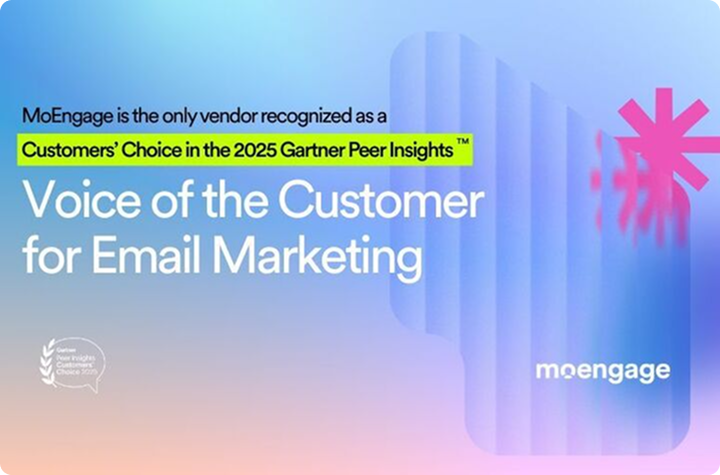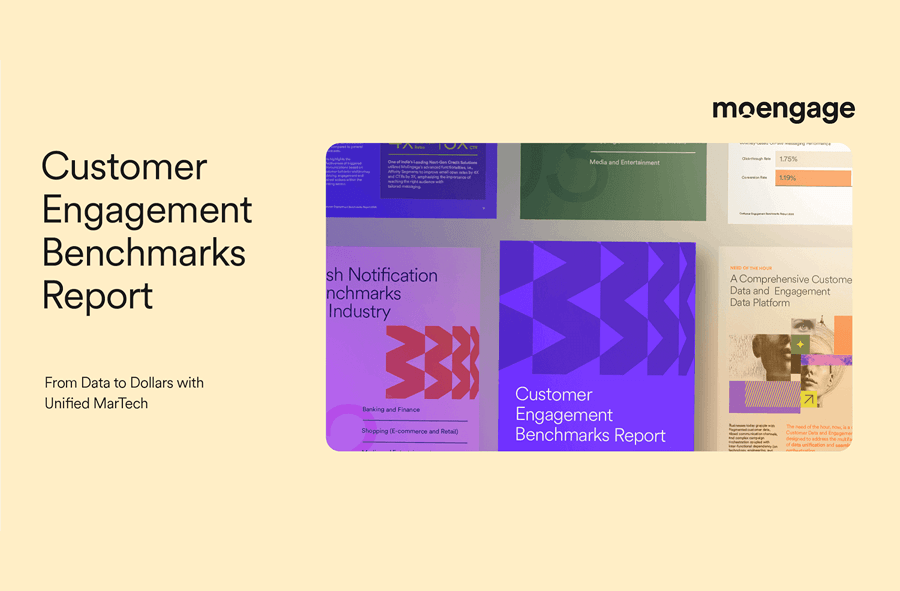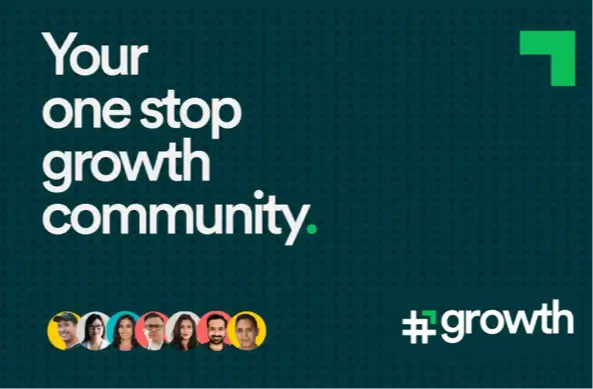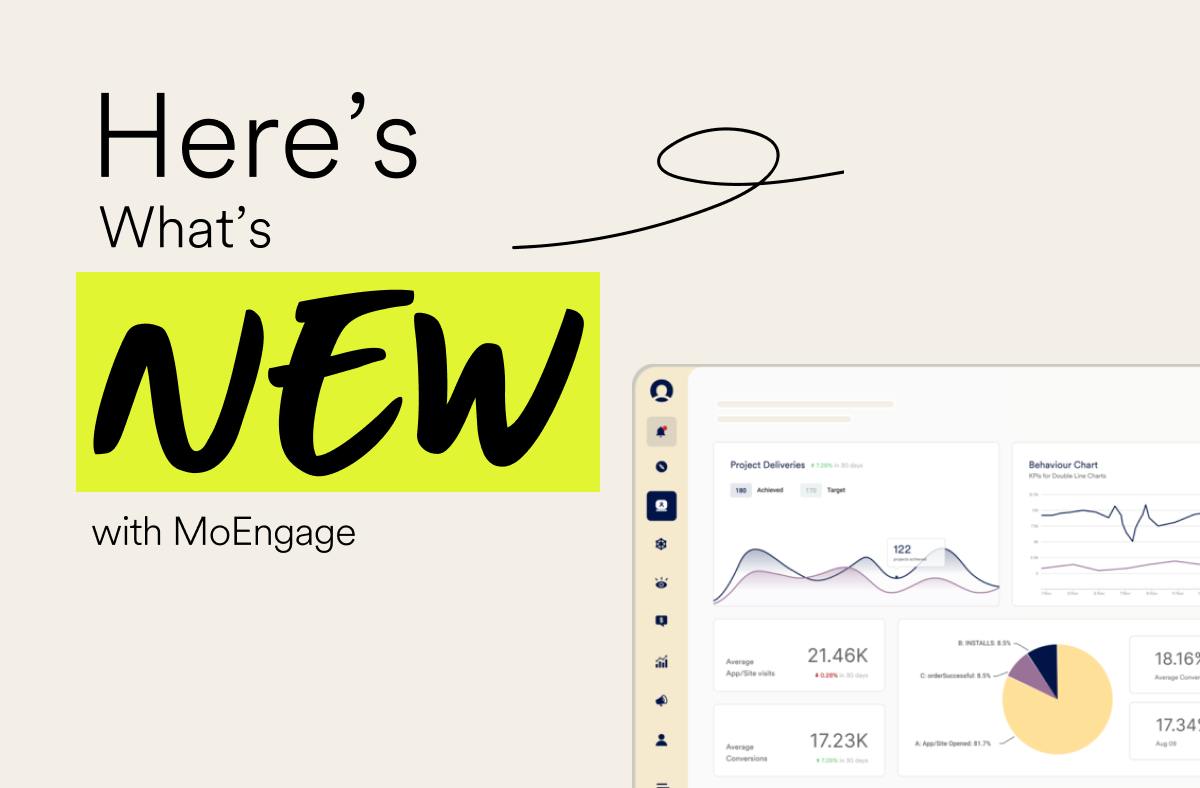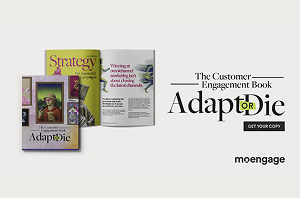Juan Mendoza Q&A: Customer Engagement Book Interview
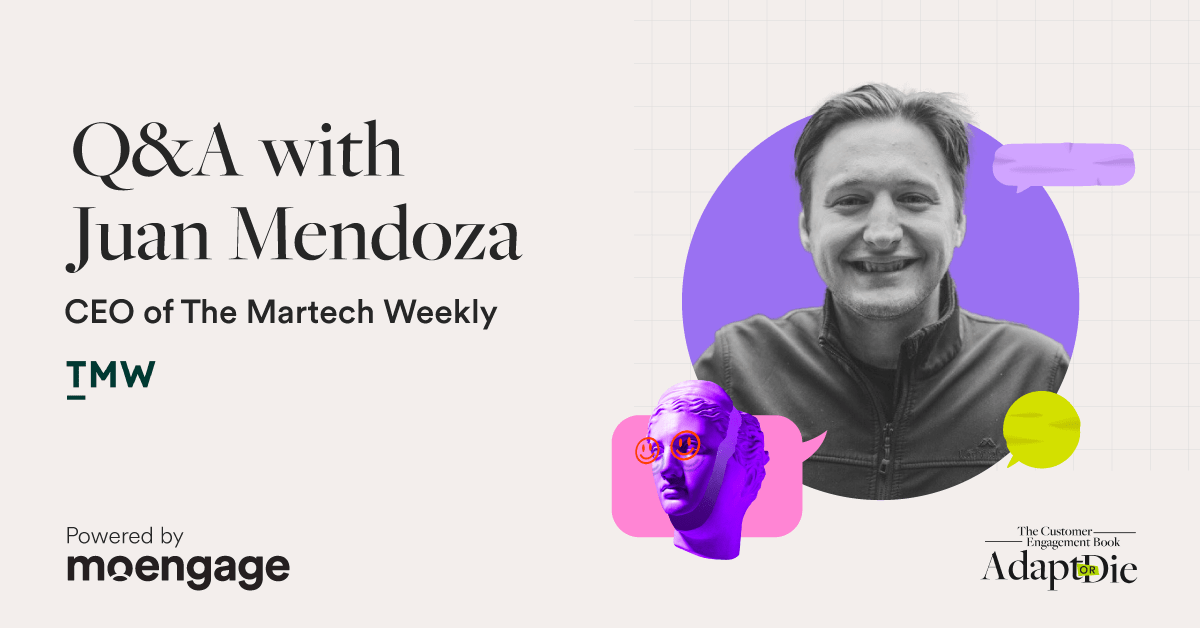
Reading Time: 12 minutes
In today’s rapidly evolving landscape, understanding the forces that shape consumer decisions is not only important but essential. We sat down with Juan Mendoza, CEO of The Martech Weekly, for an in-depth Q&A session to explore these forces and shape Chapter 1 of “The Customer Engagement Book: Adapt or Die.”
This conversation provides critical insights into how technology, culture, and economics are reshaping the consumer experience, and why marketers must stay agile to remain relevant. Whether you’re a seasoned marketer or just beginning your journey, Juan’s perspectives offer invaluable guidance on navigating the complexities of modern consumer engagement.
Juan Mendoza Q&A Interview
1. What do you believe are the most significant forces driving changes in consumer behavior today?
There are quite a few forces happening right now. Think about how consumer behavior has changed overall in the past 30 years. So many shifts — the internet, personal computing, smartphones, social media, E-commerce — have really scaled the ability for brands to impact their customer experience in ways that were just not possible before.
But now we have this post-Covid hangover still hanging over things. That famous McKinsey chart showed how 10 years’ worth of e-commerce adoption happened in just three months during the early days of the pandemic.
Because of that, most people were forced for almost two years to primarily engage with products, do commerce, and get information online.
Now we’re four or five years out of that process, and the expectations from consumers has elevated to the point where brands are still keeping up and still trying to make sure they can actually deliver.
We’re seeing brand-new social media platforms come to market. Think of TikTok over 2020, and more recently Temu and Shein, both very focused on the Chinese supply chain and both doing something most retail platforms cannot do, which is change products by the dozens or hundreds or thousands every single day to meet consumer demand.
Another significant force right now is data privacy. The Pew Research Center consistently puts out reports saying that 70-80-90% of consumers are worried about the data being collected about them, shared, and used across the internet.
That value exchange between brands and consumers and what they’re getting for what they share about themselves is one of those significant driving forces as well.
The last one, which is the most exciting, is the advent of large language models (LLMs). This sort of tipping point from back in 2022 to 2023 where we started to see these incredibly sophisticated chatbots embrace the ability for consumers to get more information about products and services.
That’s transforming AI large language models into significant consumer channels where they’re getting products, services, information directly in a way we haven’t seen before.
That’s something a lot of marketers should stand up and say, “How is this large language model consumer channel going to affect our business and impact our visibility, our brand, and our ability to drive revenue?”
2. How do cultural, societal, and economic factors intersect with technology to shape the way consumers behave?
The Internet has its own culture, and because it’s distributed globally, cultural norms have changed in ways most people aren’t used to. You’ve got memes, shared norms, viral movements, influencers — all these cultural things are changing perceptions.
Marketers in the old days used to target a certain demographic in a certain location, but beliefs, attitudes, and cultural norms are no longer constrained to geographic location. That’s important when it comes to marketing and customer experience — you’re dealing with a much more diverse range of cultural mindsets and people when you do it via the Internet.
The intersection with technology, the Internet, social media in particular has shifted cultural norms away from geographical locale to almost an ideological or social connection, a network-based cultural phenomenon.
You’ve got a lot different ways of thinking about society. Even recently, social media networks have announced they’re going to reduce the amount of fact checking and allow more people to openly express themselves on social media. This will only add fuel to the fire of the dislocation of cultural norms, values and how people talk about the products and services they receive.
Why is that important to consumer behavior? We’re shifting to a more open, free-form Internet, which is less regulated and more of a canvas for free expression. But because of that, we’re also going to have issues around hate speech and content that is not brand-safe.
For marketers, as more people share online and engage with each other, there’s going to be more divisiveness and information you probably don’t want associated with your brand. Brand trust and the ability to protect your brand regarding what new conversations are happening online is going to be quite important.
As for economic factors, we’re seeing record levels of inflation.
Interest rates have declined significantly, so investment in tech has reduced significantly, but cost of living is a huge pressure in Western countries, and most consumers are pulling back on spending and being more deliberate about what they spend.
If you’re in that sort of non-essential category, if you’re selling products that are adjacent or not really in that commodity set, it’s going to be much harder for you to sell. The experience has to be much better. There has to be a greater value proposition. And marketers, because of the inflation rate and the economy, are still struggling to get enough budget to drive consumer demand.
I would say right now the biggest differentiator for marketers when it comes to behavior change is understanding price sensitivity and how to compete on price, but do it in a way that’s not just discounting, but elevating the value that a customer gets and really focusing on giving that message to the consumer.
3. Do you think consumer behavior changes in cycles or are we entering just a completely new paradigm of engagement?
When it comes to “above the line” — how consumers get information, how they make decisions on products — there’s a lot of change out in the media world and marketplace because of large language models.
You can’t really pattern-match most customer experiences. You might go to a shop, see something in the window, then six months later search for it because you’re interested.
Or maybe a friend bought that product and you check it out at their house. There are millions of scenarios influencing buying decisions. That’s just reality — most customer journeys are unknowable “above the line” before they actually purchase or start engagement.
But with large language models, I think it changes that paradigm significantly because consumers will be finding information, learning, and talking with an AI agent that allows them to get information in ways they haven’t been able to before.
And all of that is not visible to marketers today, simply because the LLM platforms like ChatGPT don’t expose their data to brands like Google Search has done in the past.
If you’re a marketer doing search or social media, you can see brand impressions, conversations on social media, searches, click-throughs, and engagement rates.
But with large language models, if you search for something in ChatGPT, marketers don’t have any data.
Customers will have more private conversations that aren’t tracked, and marketers will have less visibility and data to make decisions on what people are actually looking for.
4. Why is it important for marketers to understand not just how consumers are changing, but why they are changing?
There’s a difference between quantitative and qualitative.
Quantitative data is your Google Analytics dashboard, your email marketing report, your analytics showing what customers are actually doing — clicks, opens, conversions, sales. That gives you the “how” — what people are actually doing. But that is not enough for insight.
One thing I think about constantly in data-driven marketing is that marketers increasingly say, “Let’s just trust the data. The data has the answers and will tell us what we should do to fix our experiences.” But there’s an element of taste and genuine curious inquiry required for a marketer to talk to customers and understand what’s driving that behavior to get real insight.
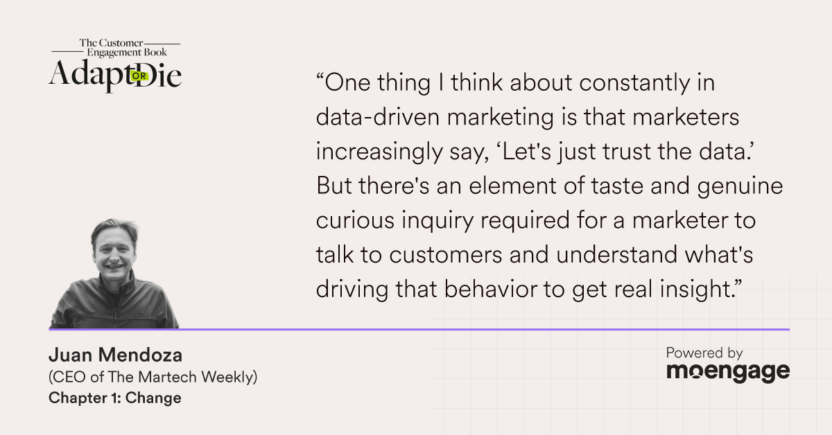
There’s a massive difference, a chasm between the “how” and the “why.” But we need to jump over the chasm, and more marketers need to embrace the chaos of genuine intellectual inquiry and curiosity to figure out that “why” question.
5. What risks do marketers face when they resist or delay adapting to shifting consumer expectations?
I think relevance is the major risk. There are two sides to this coin.
One side is, if you’re adapting to consumer behaviors or shifting consumer expectations, you run the risk of just being like everyone else.
I’ll give you one example: TikTok in 2020 introduced a new paradigm for social media with the vertical scroll video. But then quickly every social media platform embraced it. In that example, there was a prime mover that triggered a major consumer change in content consumption, and then it quickly commoditized and everyone looked the same.
If you try to embrace consumer shifts and trends, sometimes the risk is actually just looking like everyone else because the cycle in which trends influence consumer behavior and companies’ ability to pivot is getting faster.
Is that good for marketers? Absolutely not. Every marketer wants to differentiate, face customers directly, have a specific value proposition, and a unique experience. Nobody wants to look like everyone else.
If you just blindly follow consumer behavior trends without that genuine inspiration asking “why” and coming up with original ideas, you’re just going to look like everyone else.
The other side of the coin is that if you do not adapt to clear consumer preferences and expectations, you will be left behind. If you don’t embrace most models of personalization today, there will be challenges when a customer comes to your website.
There are minimum standards they expect: product recommendations, offers when you collect data, help with customer service complaints, easy returns.
Think about the core things that really matter to the customer, embrace those, invest in them, and make those changes.
6. How do you personally define the concept of embracing change as a marketer?
I think embracing change is actually the job. It’s not a component, not a department, not something you put on a PowerPoint slide or have a meeting about.
Marketers have to be masters of navigating change because customers, technology, and the marketplace are changing every single day.
Change is the job, but there are core things that never change with people. Everyone feels sad, everyone feels happy, everyone gets hungry, everyone needs to sleep. There are so many things that don’t change for people in general.
That’s your bedrock. But embracing change is definitely the job of marketing today. There’s no sticking your head in the sand and waiting for customers anymore.
You have to be at the forefront of change. There’s no way around it.
7. Can you share an example of a brand or marketing strategy that successfully adapted to major shifts in consumer behavior? And what can we learn from these approaches?
There’s one brand I worked with for quite a while — an airline. As an airline, they were one of the first to get into E-commerce. Over 20 years, they built one of the best yielding, high-conversion, high-upsell flows for booking flights.
In the early days they really embraced customer data, technology, personalization across channels — web, email, SMS. But then as we moved into the 2020s, they started thinking about post-Covid, how to revolutionize retailing and personalization across all channels.
One very successful thing they implemented was a predictive personalisation program that recommended destinations based on the customer’s travel profile. When a customer purchased a ticket, went on holiday, and returned home, they would have this personalized campaign that used machine learning to calculate which location the customer might go to next.
They were able to take that data and use it to give customers inspiration for their next flight or travel, and that was wildly successful — millions and millions of dollars of incremental revenue just by giving customers a little nudge toward their next holiday.
If you think about it over 30 years, airlines evolved from going to an agent who would book your flights, to going online and having a personalized experience with flights, deals, holidays relevant to you, helpful add-ons and products. That personalized experience is a huge shift, really leveraging convenience and scale.
Ironically, we’re now facing an era where another kind of agent will be the best way to book your next holiday which will force the travel industry to evolve again as consumer expectations change.
What you can learn from their approach is that they went early, starting with an innovation story about leveraging the Internet to bring airline tickets at lower cost to as many customers as possible. They had a culture of “we started this innovation journey and we do not want to stop innovating for the customer, making this experience as convenient, personalized, and low-cost as possible.”
That focus from the executive level, plus the vision and culture of the team wanting to serve millions of customers every day — that’s a good example of a company that thinks clearly but also passionately about consumer change.
8. Are there any examples of brands or industries that failed to adapt to these changes and what were the consequences?
There are a lot. I think the classic ones are Blockbuster and Netflix.
It’s always a good story because Netflix did not start as a streaming service — they started as a mail-order DVD service.
An old story goes that Reed Hastings, the CEO, apparently had the idea for Netflix because he was at Blockbuster and rented Top Gun as a VHS. He forgot it and left it at home, then when he went to return it, Blockbuster tried to charge him for a late return fee.
He was like, “Why am I getting penalized for keeping this?” Blockbuster was punishing customers for behavior that he thought should be rewarded.
So he changed the business model upside down, to say, “You can take three DVDs or VHS tapes, they get delivered to your home, and you can keep them as long as you want. As long as you return them, you can rent another one.”
What’s fascinating is what he did in the early days. Blockbuster had limited capacity for products — only so many DVDs or VHS tapes you could put on a shelf. Netflix turned people’s homes into millions of little warehouses for DVDs because suddenly you didn’t need all this product stocked. People held it and paid a monthly subscription instead of late fees or individual rental fees.
I use this as a famous example because it’s not just about technological change — it’s about business model change and finding better models that serve customers differently.
Netflix turned the industry from one that punishes people for being late with returns or holding products too long, to an industry that rewards customers for holding onto products longer.
While the account may be a piece of marketing fiction, the lesson is clear: Brands that don’t respond as consumers adopt new habits and preferences risk becoming irrelevant — and disappearing completely.
That’s a fascinating inspiration for how you think about your business model, how you make money from customers, and how you punish or reward them.
9. What skills or mindsets are essential for marketers to thrive in an era of constant change?
You have to embrace risk. There’s no good work without an element of risk.
There has to be something on the line, an element of loss. You have to put your voice forward on what you think should change in a brand.
Marketers need to challenge their executives and their team, but based on the right principles — values like being customer-first, serving with empathy, care, consideration, genuine interest. So the first mindset is, you need to take risks. No risks, no rewards — that’s just the way it is.
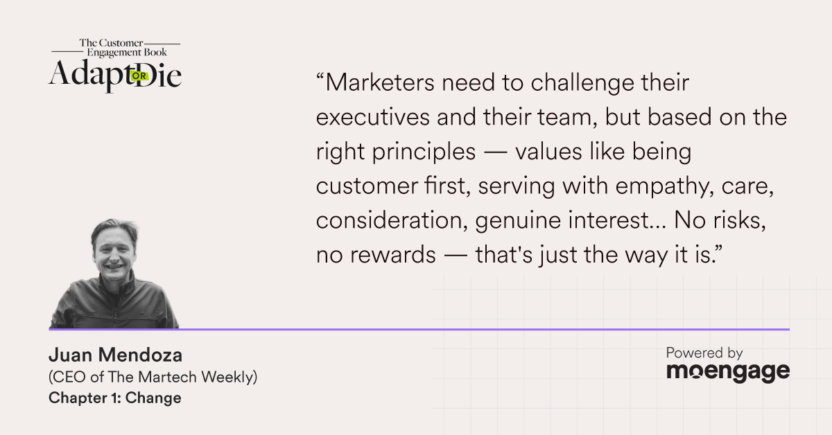
The second one is genuine curiosity.
That’s where it starts — genuine interest in what the customer is doing, how they’re changing, what they’re saying. If you don’t have that curiosity, you’re not going to be interesting to your customers. Being curious and asking those “why” questions is extremely important.
Another mindset is to embrace the courage of not knowing. Sometimes to make a significant change in experience and have that big leapfrog moment, you have to literally just have the courage to say, “We’re going to try something and we don’t even know if it’s going to work.”
As I mentioned before, boiling everything down to data-driven numbers can be a blind alley, so embracing the unknown is extremely important.
And then I would say alignment. In large enterprise companies and big consumer brands, no single person makes decisions. It’s by community, by consensus.
Learning how to get buy-in, how to pitch a business case, how to get everyone to agree on the mindset — those leadership skills are extremely important.
For skills, I would say cultural reading, social listening — those types of skills are extremely important. Leadership skills matter in terms of knowing the data you’re collecting, data literacy around what’s actually being collected and used, understanding that, being able to interface with technology and data engineering teams, being able to have those conversations in the same language.
And then there’s the tactical skill set: how do we get an experiment out tomorrow, how do we build something we can learn from quickly?
That ability to align people, get your processes sorted, define a use case, define a blueprint — those are all incredibly important skills.
10. Looking ahead, how can marketers prepare for future shifts in consumer behavior when change is happening faster than ever?
Getting out on LinkedIn, meeting people at events, learning from high-quality research, editorial, and media products can help your perspective on how tech changes.
A lot in marketing technology is about the platforms and tech that are changing, and how you can best leverage or use that in your business.
It doesn’t take a lot — maybe sitting down on the weekend for an hour or two doing some reading can help a lot.
Meeting and connecting with other folks in this space, learning what they’re doing in their companies is incredibly valuable, and more people should be doing that.
We see a lot of companies relying on consultants to tell them what is changing, but it should be the job of marketing technology leaders to do that themselves.
So some of the core things are getting out into the industry, making friends, building a network, learning from others. It’s an incredibly rewarding and valuable part of the job, and I think it’s absolutely necessary if you want to counteract and leverage change in your own company.
As an ending note, I would say think about the things that never change, that are so valuable they would last generations. Then how do you use that as your foundation to innovate with the constant cycle of consumer behavior change around the world?
This interview Q&A was hosted with Juan Mendoza, CEO of The Martech Weekly for Chapter 1 of The Customer Engagement Book: Adapt or Die.
Download the PDF or request a physical copy of the book here.



